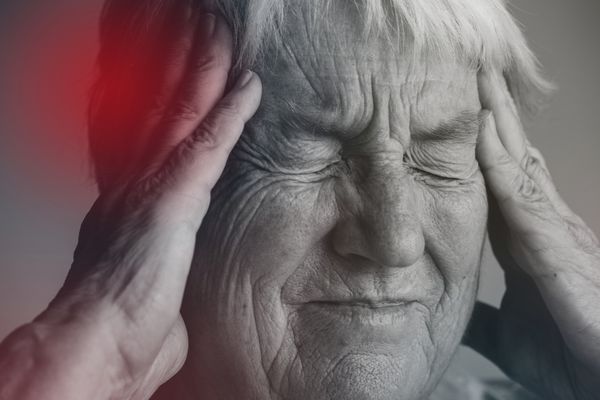In its judgment dated November 9, 2019, a Constitution Bench of the Supreme Court of India, comprising the Chief Justice of India (CJI), Ranjan Gogoi, and Justices S.A. Bobde, Dr. D.Y Chandrachud (as he was then), Ashok Bhushan, and S. Abdul Nazeer interpreted the Places of Worship (Special Provisions) Act, 1991 in the case of M Siddiq (Dead) Through Legal Representatives vs Mahant Suresh Das and Ors. (Ram Janmabhoomi temple case).
The Court gave a binding declaration of the law interpreting the Act, which, under the constitutional scheme, becomes the law of the land and binds all courts within the territory of India under Article 141 of the Constitution of India. Its decisions must be followed by all courts (even the top court) in subsequent cases following the Doctrines of “Precedent” and stare decisis. The rationale is that the law by which the citizens are governed should be fixed, definite, and known.
Constitutional basis to an assurance
The Preamble to the Act states: “An Act to prohibit conversion of any place of worship and to provide for the maintenance of the religious character of any place of worship as it existed on the 15th day of August 1947, and for matters connected therewith or incidental thereto.” The five judges who authored the judgment collectively in the Ram Janmabhoomi temple case defined the Act thus: “The law has been enacted to fulfil two purposes. First, it prohibits the conversion of any place of worship. In doing so, it speaks to the future by mandating that the character of a place of public worship shall not be altered. Second, the law seeks to impose a positive obligation to maintain the religious character of every place of worship as it existed on 15 August 1947 when India achieved independence from colonial rule.”
Editorial | Incremental injustice: On the Gyanvapi mosque survey
“Place of worship” includes temple, mosque, gurudwara, church, monastery or any other place of public religious worship of any religious denomination or any section thereof, by whatever name called. The definition in the Act states “Conversion with its grammatical variations, includes alteration or change of whatever nature.”
The Court further holds that “Section 3 enacts a bar on the conversion of a place of worship of any religious denomination or a section of it into a place of worship of a different religious denomination or of a different segment of the same religious denomination” and that “Section 4 preserves the religious character of the place of worship as it existed on 15 August 1947”. The Court held that only a place of worship, “Commonly known as Ram Janam Bhumi-Babri Masjid” stood exempted. The Justices declared, “The law imposes two unwavering and mandatory norms: A bar is imposed by Section 3 on the conversion of a place of worship of any religious denomination or a section of a denomination into a place of worship either of a different section of the same religious denomination or of a distinct religious denomination. The expression ‘place of worship’ is defined in the broadest possible terms to cover places of public religious worship of all religions and denominations”.
After noticing the intention of Parliament, the Justices emphasised that “The Places of Worship Act which was enacted in 1991 by Parliament protects and secures the fundamental values of the Constitution”. They held that “In providing a guarantee for the preservation of the religious character of places of public worship as they existed on 15 August 1947 and against the conversion of places of public worship, Parliament determined that independence from colonial rule furnishes a constitutional basis for healing the injustices of the past by providing the confidence to every religious community that their places of worship will be preserved and that their character will not be altered”.
The Justices added, “The law speaks to our history and to the future of the nation. Cognizant as we are of our history and of the need for the nation to confront it, Independence was a watershed moment to heal the wounds of the past. Historical wrongs cannot be remedied by the people taking the law in their own hands. In preserving the character of places of public worship, Parliament has mandated... that history and its wrongs shall not be used as instruments to oppress the present and the future.”
Interestingly, the Justices empathically disapproved the judgment of Justice D.V. Sharma of the Allahabad High Court against which they were hearing the appeals in which the judge had held that the “Places of Worship (Special Provisions) Act, 1991 does not debar those cases where declaration is sought for a period prior to the Act came into force or for enforcement of right which was recognised before coming into force of the Act.” The Justices held that “The above conclusion of D V Sharma, J. is directly contrary to the provisions of Section 4(2)”, and that, “Section 4(2) specifically contemplates that all suits, appeals and legal proceedings existing on the day of commencement of the Places of Worships Act, with respect to the conversion of the religious character of a place of worship, existing on 15 August 1947, pending before any court, tribunal or authority shall abate, and no suit, appeal or proceeding with respect to such matter shall lie after the commencement of the Act. …Clearly, in the face of the statutory mandate, the exception which has been carved out by Justice D V Sharma runs contrary to the terms of the legislation and is therefore erroneous”.
The Supreme Court’s order on August 4, 2023 refusing to stay the order of the Allahabad High Court dated August 2, 2023 in the Anjuman Intezamia Masjid Committee challenging the order of the Allahabad High Court which affirmed the order of the District and Sessions Court, Varanasi dated July 21, 2023 raises serious questions about its legality, propriety and justness. The Bench comprising CJI D.Y. Chandrachud, Justice J.B. Pardiwala and Justice Manoj Misra, are, with the greatest respects, completely wrong in allowing the Archaeological Survey of India (ASI) survey on the premise that the key question for any determination under the Act of 1991 is the religious character of a place of worship as it existed on August 15, 1947. The Bench has singularly failed to follow a binding precedent to which Justice Chandrachud himself was a party in the Ram Janmabhoomi temple case. There can be no doubt in anyone’s mind that the Gyanvapi mosque has been a place of public worship for centuries for Muslims and, therefore, there is an absolute and total bar on changing its character in any manner, into a place of worship of a different religious denomination.
If the nature of the mosque is untouchable since it existed on August 15, 1947, then what purpose can an ASI inquiry be directed at? And what purpose can it achieve? The Court never allows or grants futile reliefs.
The Supreme Court has completely overlooked that the obligations under the Act were upon the state as also on every citizen of the nation and those who govern the affairs of the nation at every level were bound by it.
The Supreme Court is the ultimate custodian of constitutional values and morality. Applying the spirit of the judgment of Ram Janmabhoomi temple case, the three courts ought to have been extraordinarily mindful about the rights and feelings of the minority community. At a crucial time when elections are approaching,, any majoritarian approach can create serious misgivings in the minds of sections of society.
Bigotry during parts of the Islamic period has always stood condemned; in fact that led to the rise of the powerful Marathas, Rajputs and Sikhs, resulting in overthrowing the Muslim empire.
The opening of a Pandora’s box
The question now is this: how far do we go from here? Do we order such a survey for every mosque because claims will be made by people across cities and villages? Someone may even suggest that we dig up the Red Fort and the Taj Mahal. There is also a plea on the Court “praying for a scientific survey” of the Mathura mosque. The Supreme Court has opened a Pandora’s box.
We must remember that while injustice was done to the Hindus by Muslim rulers, democratic India cannot perpetuate them to undo them. One can only remember that rulers like Akbar respected Hindus and allowed religious freedom to them. The Bhakti movement which produced some of the greatest saints such as Chaitanya, Surdas, Tulsidas, Gopala Bhatt, Sankardeva, Eknath, Tukaram, Dadu, Meera Bai, and Guru Nanak raised the status of non-Brahmins, especially Dalits amongst Hindus. In that sense, religion was democratised.
When history is written in future, there should not be any reference that the Hindus of the 21st century indulged in religious bigotry. For over 5,000 years Hinduism has been a way of life and one of the greatest religions marked by Liberalism, Tolerance and Absorption. Let us hope for peace and prosperity in our beloved India.
Dushyant Dave is a Senior Advocate in the Supreme Court of India







